By Eric Vandenbroeck and co-workers
Understanding the 100th year of the current
regime in China Part Two
We started this
multi-part investigation about the CCP/PRC, with the premise that Chinas cultural
past is crucial for understanding its national presence. Where we pointed out
that early on already Historian James Harrison considered the CCP party's
actions of rewriting Chinese history as "the most massive
attempt at ideological re-education in human
history." For example, left out from CCP/PRC history books
is that most communists entered politics through nationalism whereby leading
nationalists in turn (including Sun Yat-sen and his successor Chiang Kai-shek)
similarly adopted Leninist precepts thus creating a right-left overlap
something the CCP/PRC tries to ignore and erase. And also that at the CCP’s
birth in 1921, communism was the least promising of many contending political
forces in a country devastated by floods, famines, warlordism, and corruption. The
12 men who founded the party were fascinated by the new, poorly understood
ideology of Marxism, which contended for influence with liberalism, social
democracy, anarchism, fascism, and other isms that claimed to show how to
restore China’s greatness.
On 1 July 2021, the
Chinese Communist Party (CCP) will celebrate
its centenary anniversary. Over the past several months, the country has
been inundated with a 24/7 tsunami of propaganda. Bookstores are filled with
newly minted books with the ubiquitous hammer-and-sickle on their covers.
China’s consumer goods industry is churning out a surfeit of communist kitsch,
busts, buttons, statues, posters, plates, paintings, commemorative coins, and
other memorabilia. Commemorative films play on television and in movie
theaters. Work units and school children are being organized to go on pilgrimages
to revolutionary sites (so-called “red tourism”).
Thus as seen
above some efforts fall into the formats one might expect before an important
date. But these traditional exercises have been supplemented with new
elements that seem aimed at saturating the public consciousness and people’s
conversations while reinforcing Xi’s position as the country’s paramount
leader. A massive public education campaign focused on CCP history was launched in February. It included the
release of 80 national
propaganda slogans,
including several with Xi at the center, a scale that the China Media Project
described as “unprecedented in the reform era.”
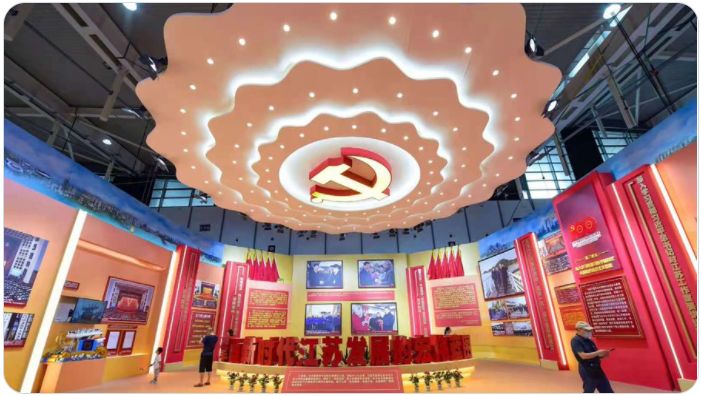
As the CCP readies
the 100th birthday cake, it is worth reflecting that, among
commentators of a certain age, both inside and outside China, few expected this
moment to come. In 1991, it was widely assumed that the collapse of Soviet
communism heralded the demise of what had started as its Chinese franchise (the Comintern
in Moscow was heavily
involved in the CCP’s establishment.) And yet, here we are. Either all
modernizing roads do not, as was once thought, lead to liberal democracy, or
China is taking the mother of all detours.
And as recently
mentioned in the South China Morning Post: “Don’t
believe a word that Xi Jinping tells you about China’s history. Let’s think
properly about what that history was across the 20th century. And
that’s difficult to do because over the last five, six, seven years, the
archives have shut down in China.”
The Chinese Academy
of Social Sciences has established a specialist history unit to propagate the
official version of the past. And this year Beijing set up a hotline for
citizens to report
historical nihilism to
authorities.
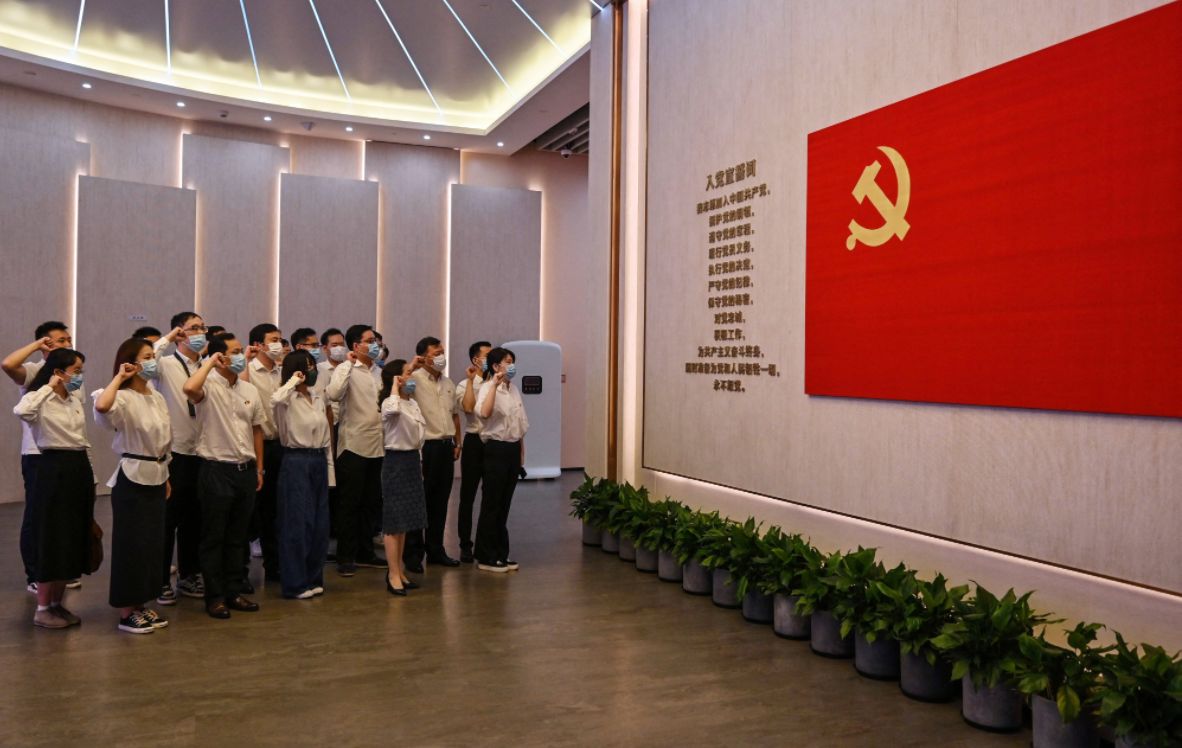
The latest edition of
the CCP’s official concise history condenses the decade-long turmoil of the
Cultural Revolution into three pages.
The party’s official records
show that it opened its first congress in Shanghai on July 23, 1921. But the
anniversary of foundation was set on July 1 because, according to a record, Mao
merely remembered that the first party congress had been convened “in July”
when the CPC decided on the date of the anniversary in the 1930s. Plus, by now
several of the attendees have been airbrushed out of official accounts,
some of them accused of collaborating with the Imperial Army in the treacherous
civil war and Japanese occupation in the 1930s.
It seems clear from
the available evidence that an organization calling itself the Communist Party
of China was born a full eight months before the First National Congress as
evidenced by the bulletin Gongchandang (left),
published in November 1920 by Chen Duxiu’s Shanghai group:
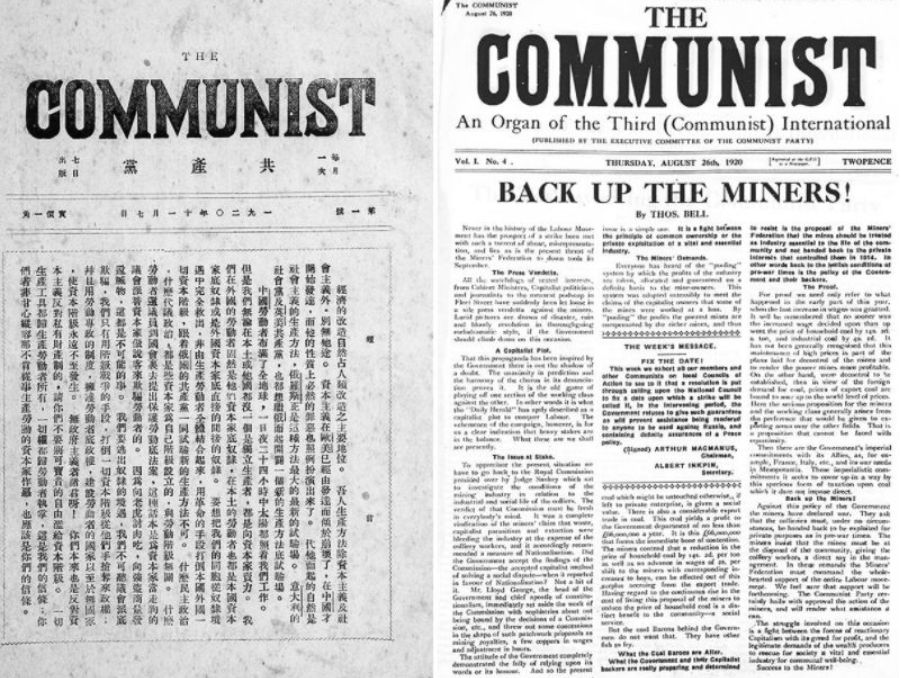
In fact, history
weighs heavily on Xi, who keeps mentioning the Soviet collapse. He is waging a
campaign against what he calls “historical nihilism”, that is, any grumbling
about communism’s past. One Soviet leader, Nikita Khrushchev, is held up as the
archetypal nihilist for denouncing Stalin’s brutality in 1956. That event
haunts Xi. Party literature says it led to the Soviet Union’s demise. Much of
Xi’s energy is focused on making sure the party learns the Soviet lesson. Mao
must remain a saint.
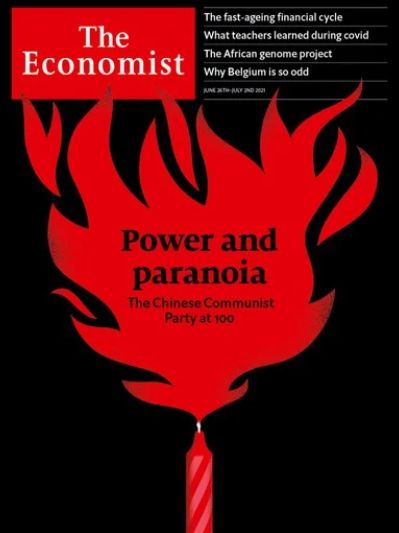
As the Economist
reported yesterday: The most dangerous threat to Mr. Xi comes not from the
masses, but from within the party itself. Despite all his efforts, it suffers
from factionalism, disloyalty, and ideological lassitude. Rivals accused of plotting
to seize power have been jailed. Chinese politics is more opaque than it has
been for decades, but Mr. Xi’s endless purges suggest
that he sees yet more hidden enemies.
And in the
July/August 2021 issue of Foreign Affairs Jude Blanchette Freeman Chair in
China Studies at the Center for Strategic and International Studies
writes: The CCP’s long experience of defections, attempted coups, and
subversion by outside actors predisposes it to acute paranoia, something that
reached a fever pitch in the Mao era. Xi risks institutionalizing this paranoid
style.
But to ensure that
history really appears to be on its side, the party spends an inordinate amount
of time rewriting it and preventing others from wielding their pens. Few
Chinese leaders have done so with as much verve as Xi, who launched his reign
in 2012 by making a major speech at an exhibition on Chinese history. Since
then, he has waged war on “historical nihilism,” in other words, those who want
to criticize the party’s missteps. Xi has many goals, such as battling
corruption, fostering innovation, and projecting power abroad through his Belt
and Road Initiative, but controlling history underlies them all.
This belief in the
power of history is one of the few constants in the CCP’s hundred-year saga.
Though based on one creed, its ideology has actually been a blunderbuss of
strategies: it started as a group of orthodox Marxists who looked to the
industrial proletariat to lead the revolution, lurched to a rural-based party
that tried to foment a peasant rebellion, morphed into a the ruling party
dominated by a personality cult built around Mao Zedong, transformed itself
into an authoritarian technocracy, and now presents itself as in charge of a
budding superpower dominated by a strong, charismatic leader.
Three interlocking
ideas unite these stages. Many Chinese patriots have held one since the
nineteenth century: modernizing China means making it wealthy and powerful
rather than free and democratic.1 Another, also shared by Chinese patriots, is
that only a strong state can achieve this. And finally, that history anointed
the Communist Party to achieve these utilitarian goals.
A teacher and her
students in Lianyungang, China, pose with Communist Party emblems during a
class about the party’s history in June 2020:
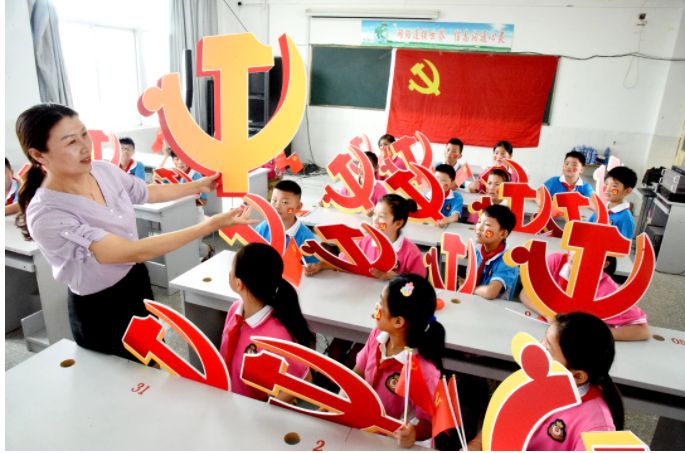
As we have initially seen, China’s major aim in World War I
was the return of Qingdao and the surrounding Shandong Peninsula. Germany had
occupied the Chinese port city of Qingdao in 1897, negotiating a forced lease on the city and its surroundings that, like the British
lease on Hong Kong’s New Territories, was due to run through 1997. But in 1911
and 1912, the Qing dynasty, which had signed those treaties, was overthrown.
The new government in Beijing, known as the Beiyang
government after the army corps that formed it, negotiated with foreign powers
to restore China’s territorial integrity. It sought the restitution of lands
given up by the Qing dynasty in the unequal treaties of the 19th century, starting with
Qingdao and the Shandong Peninsula.
The problem for China
was not that Germany refused to cooperate. It was that Germany’s territory in
the Shandong Peninsula had already been taken, by Japan. At the beginning of
World War I, the United Kingdom, desperate for Japanese naval support in the Pacific,
had offered the country the German naval base at Qingdao in exchange for
entering the war on the Allied side. Japanese forces took Qingdao in November
1914.
When news reached
China on 2 May 1919 of accepting the Japanese claims, it shocked the nation.
The hopes of those who had marched to welcome victory in November were dashed.
Such was the uproar that the Chinese delegation did not sign the Versailles
Treaty on 28 June.

The 3,000-strong
demonstration involved students from a dozen institutions in the capital and
ended with a small riot. They marched to the Legation Quarter intending to
present letters of protest to the Allied ministers, but it was a Sunday – and a
beautiful spring one, so the diplomats were largely out of town in the Western
Hills. After some hours of confrontation with police, the students marched to
the home of Cao Rulin, then Minister of
Communications, but formerly Vice Minister for Foreign Affairs, and deeply
involved in the 1915 negotiations with Japan and the secret loans of 1918.
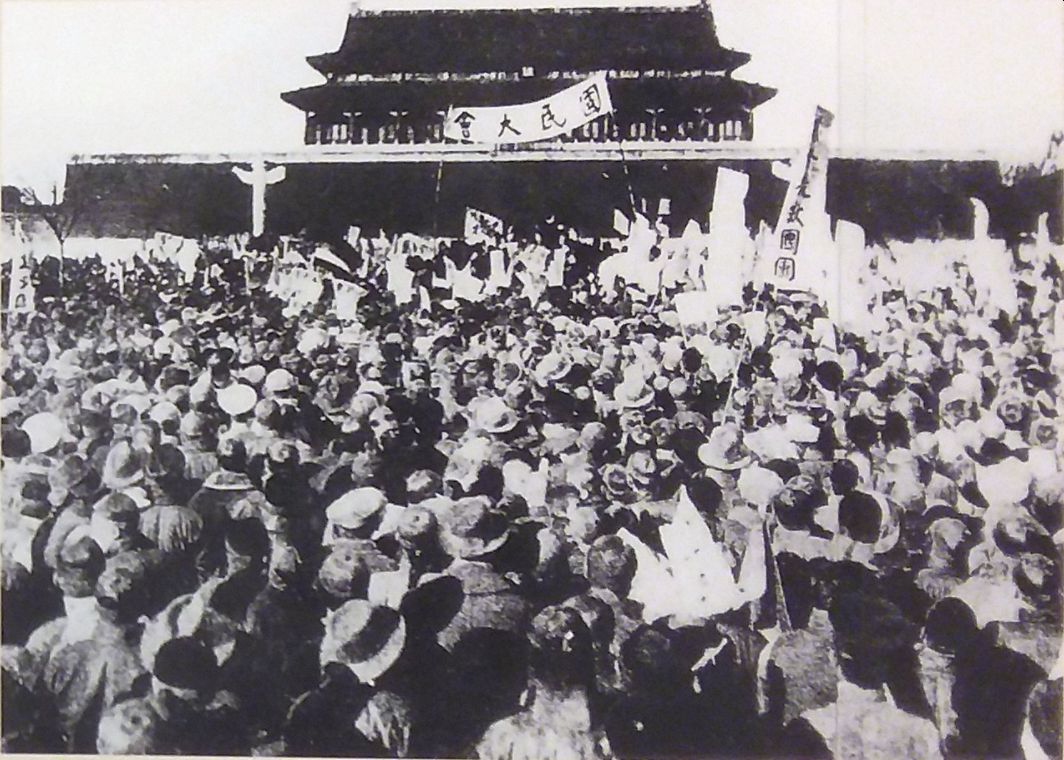
Some of the marchers
broke into the compound and set part of the house alight; Cao himself fled to
the safety of a hotel in the foreign-controlled Legation Quarter. He would not
be the last to do so: imperialism’s friends and foes alike found it convenient
to have such safe havens just a short hop away. The Chinese Minister to Japan,
who was also in the house, was less lucky and was badly beaten.1
Students of Beijing
Normal University after being detained by the government during the May Fourth
Movement:
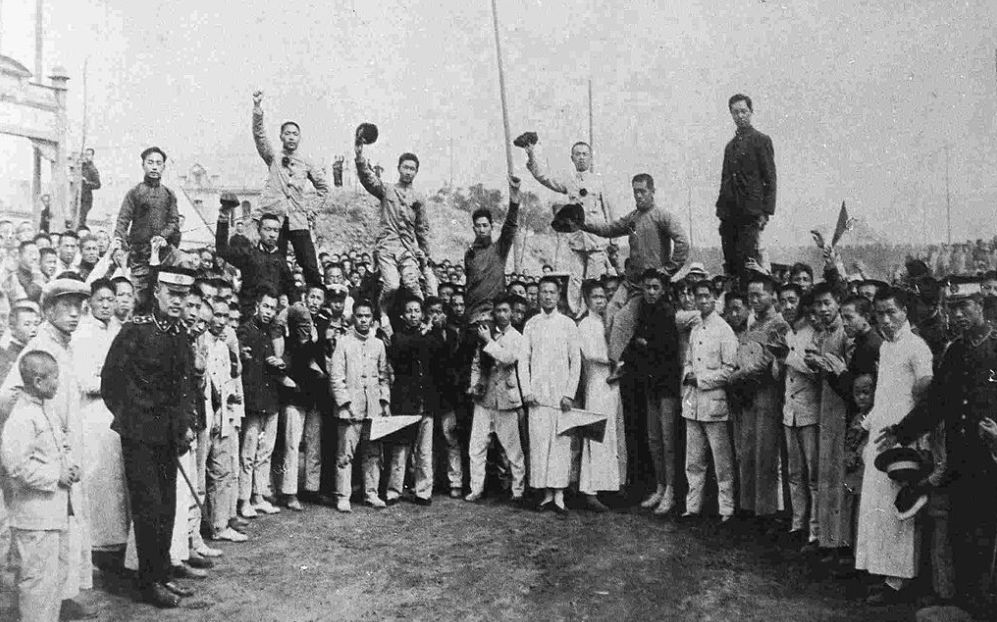
This became a
nationwide assault on imperialism and China’s prevailing culture.
Demonstrations began to be held across China, and across Chinese communities
overseas. The most potent weapon available was the boycotting of Japanese goods
or the services of Japanese firms.
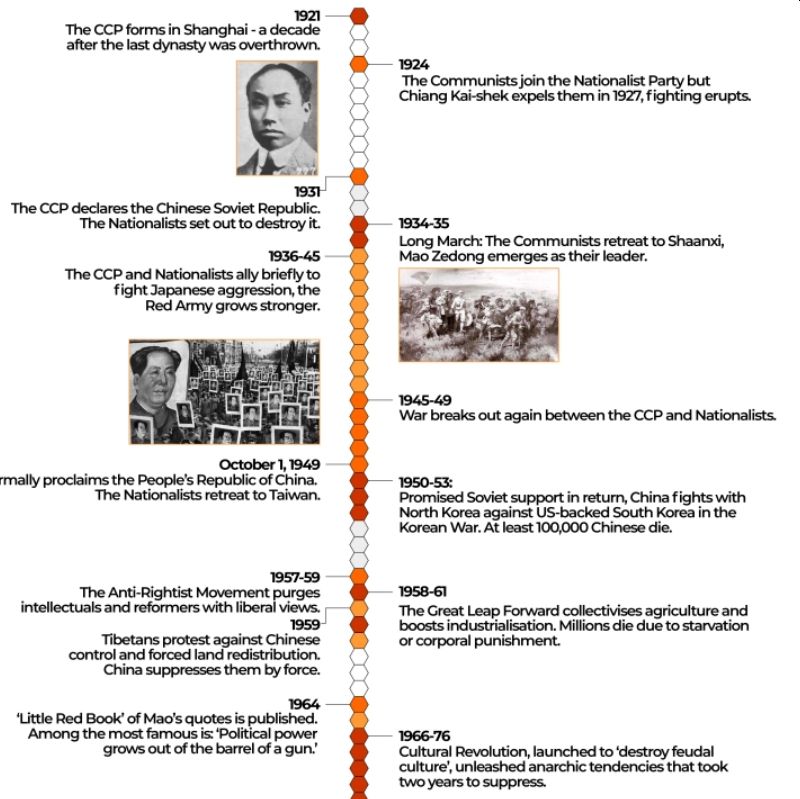
Modern China’s right-left overlap
Thus modern China’s
history is not a history made by foreigners, but its domestic history was an
internationalized one, at times very heavily spiced with them.
As we have already
seen in part one nationalism has long been
ingrained in the Party’s ideology and identity, with a long historical line
connecting the Party of today with the nationalist ferment of the late Qing
Dynasty. The core theme animating the Party across that stretch is the search
for something that could restore China to its former greatness and would help
it achieve the goal of “national rejuvenation.” Today, that phrase is at the
center of Xi Jinping’s political project, but it has a deep history that has
pervaded China’s political exertions for almost two centuries.
This concept went at
least as far back as Sun Yat-sen and was invoked by almost every modem Chinese
leader from Chiang Kai-Shek to Jiang Zemin and Hu Jintao. In this sense,
National rejuvenation provides a sense of mission not only for China’s domestic
reforms but also for its grand strategy. Also, in the case of Xi Jinping, for
example, during a high-profile tour of an exhibit at the National Museum of
China in November 2012, shortly after he became leader of the CCP, he exhibits
at that time was called the “Road
to National Rejuvenation,” and Xi said that the Chinese Dream is the “great
rejuvenation of the Chinese nation” (中华民族伟大复兴; 中華民族偉大復興; Zhōnghuámínzú Wěidà Fùxīng).
For many years, the
orthodox view in the People’s Republic of China was that after the
demonstrations of 1919 and their subsequent suppression, the discussion of
possible policy changes became more and more politically realistic. People like
Chen Duxiu and Li Dazhao shifted more to the left and
were among the leading founders of the Communist Party of China in 1921, whilst
other intellectuals, such as the anarchist writer and agitator, Ba Jin took
part in the movement.
In From Rebel to
Ruler, his new history of the CCP, Tony Saich of the Harvard Kennedy School
argues that the party also owes its survival to two much more hard-edged
institutions: its organization and propaganda departments.
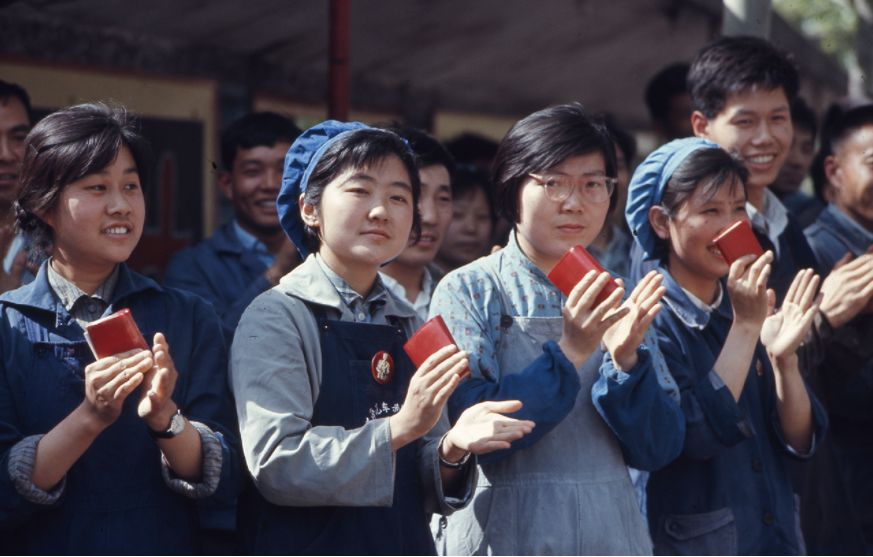
Saich gives a
memorable account of a fellow Dutchman, Henk Sneevliet,
who in 1921 was sent by Moscow to liaise with Chinese Communists. Sneevliet was present at the CCP’s first meeting and was
singularly unimpressed by them, so much so that he advised against forming a
full-fledged party. Instead, he argued that progressives should first pursue
broader goals and link up with potential allies as a way to avoid destruction.
But for example,
where all Chinese should study the history of the CCP for its 100th
anniversary, the Party’s first
General Secretary, Chen Duxiu, should not be mentioned. This
whereby the bulletin Gongchandang published
in November 1920 by Chen Duxiu’s Shanghai group calling itself the Communist
Party of China was born a full eight months before
the First (CCP)National Congress.
Chinese Marxists
initially drew intellectual sustenance from their Japanese counterparts until
Japan clamped down on leftist activities. The Chinese then turned to American
and British sources. Yoshihiro Ishikawa traces these networks
through an exhaustive survey of journals, newspapers, and other intellectual
and popular publications. He reports on numerous early meetings involving a
range of groups, only some of which were later funneled into CCP membership. He
follows the developments at Soviet Russian gatherings attended by several Chinese representatives
who claimed to speak for a nascent CCP.
But not only were
there all manner of organizations and people calling themselves communist
in China in 1920-21 but there was also a right-left wing overlap. For
example, around October or November
1920, Chen Duxiu arranged an audience
for Grigory Voitinsky (who led
the first official Soviet mission to China with (nationalist)
Sun Yat-sen in the library
of Sun’s house on rue Molière, a comfortable villa in the French Concession
built by donations from Chinese who had made their money abroad.
On 25 November, Sun
left Shanghai and returned to the south, and it was here that he received his first
letter from Lenin and responded via the Soviet trade mission in London.
The Soviet Union
launched one approach to China by open, legal means and another through the
illegal underground. With the Beiyang government
t(officially the Republic of China (Chinese: 中華民國; pinyin: Zhōnghuá
mínguó), formal diplomacy aimed to secure and
fortify Russia’s geopolitical interests. The covert overtures were in the hands
of the Comintern and directed at
furthering the Asian revolution. They came to focus increasingly on
Sun Yat-sen and the south. This pas de deux was often out of step.
The first contact with Sun Yat-sen had been made in 1918 when he telegraphed Lenin from his exile in
Shanghai to express the hope for a common struggle against the European
empires that encircled them both. Lenin had no illusions about what he termed
the ‘virginal naiveté’ of Sun Yat-sen’s expressed commitment to
socialism, but he needed allies.
Sun Yat-sen’s own
crew of foreign advisors was an eclectic and internationalized one. Partly it
was used to mediate between the revolutionary and foreign officials.
The collapse of the
Shanghai peace talks in 1919 had left the southern coalition, in which the
Guomindang played a key role, even further isolated from the formal
institutions of the republic; although in a bizarre twist, from July 1919 until
March 1920, the coalition received, with the agreement of the central
government, a share of the Customs revenue surplus, Establishing
an alternative, in their eyes legitimate, the national government in Guangzhou
had failed. The wheel of fortune turned: Guangdong province was dominated
after October 1920 by a veteran revolutionary, General Chen Jiongming, who nominally served as governor, A progressive,
if idiosyncratic, reformer, much taken with anarchist philosophy, Chen’s slogan
‘Canton for the Cantonese’ reflected the hostility of local interests to the
depredations of extra-provincial troops, as well as his own federalist
leanings. Whereas Sun Yat-sen aimed to reunite the nation, Chen and an
increasing number of others wished to explore a federal solution to China’s
problems. From his base in the east of the province, Chen had moved to
expel the forces from neighboring Guangxi province who had occupied Guangzhou
and expelled Sun’s regime. Chen allowed Sun to return to Guangzhou in November
1920, and to re-establish what the Guomindang presented as the legitimate
national government of the republic, wheeling out a few hundred members of
the old parliament elected back in December 1912 who voted to make Sun
president in May 1921.
An estimated 120,000
people processed through the city on Sun’s inauguration. Chen’s troops,
schoolchildren, even martial arts practitioners and actresses had their place
in the great demonstration. Naval gunboats fired salutes from the river, and great
triumphal arches had been erected, decorated with electric lights. But after
such a heady Guangzhou spring, tensions between Chen Jiongming’s
provincial ambitions and Sun’s aim to use the province as his base from which
to launch a war of national reunification mounted. The end came in June 1922
when Sun and his government were expelled after he had stripped his host and
protector of his offices. Outgunned and outnumbered, Sun fled, and not for the
first time with foreign assistance, shipping out of Guangzhou on a British
gunboat, but not before his own gunboats had bombarded Chen’s troops,
killing civilians as they did so. Sun returned, yet again, in February 1923,
having bought the services of mercenary units from Yunnan province, who drove
Chen out. So it seemed to go, so it threatened to go on and on,
revolutionizing the French farce with rapid exits and plot changes. But it was
a dark and sanguine comedy, for lives were lost in each act, and rarely were
they those of the principals.
During his 1922-3
exile in his house in Shanghai, safely located in the French concession, Sun
was visited by Soviet emissaries, including Adolf Joffe, the USSR’s ambassador
to Beijing, building on earlier contacts. The framework for collaboration had
started to emerge. There was nothing covert about this, although the
International Settlement police had diligently watched and recorded all
they could.
Only his ejection
from Canton by forces loyal to Chen Jiongming had
persuaded him to endorse the alliance with the Communists.
In February 1923, with outside troops’ support, so-called ‘guest armies,’
Chen Jiongming was ousted from the city and
withdrew into the northeast Guangdong province. Sun Yat-sen was able
to return to establish a new government. Before he left Shanghai, after a
series of meetings at the Palace Hotel and at Sun’s mansion, on 26 January
1923, Sun signed cooperation with Adolph Joffe, the man who had led the Soviet
delegation at Brest-Litovsk.
Shanghai’s local
press documented the meetings with Joffe and the two men’s policy agreement on
26 January, just as the ground was being laid for Sun’s return to Guangzhou.
What made this encounter distinctive was that it was a record of an
understanding between a foreign ambassador to a sovereign state and one of that
state’s rebel opponents.
During this first
congress, the Kuomintang’s reorganization process to become the Kuomintang of
China in 1919 from the previous Chinese Revolutionary Party was formally
completed. A policy declaration was also drafted to fight against imperialism
and feudalism, determining three policies of alliance with the Soviet Union and
alliance
with the Communist Party of China. This first congress eventually led to
the reunification of China four years later after the Northern Expedition.
In part one we
highlighted the process by which the state incorporated the empire’s fluid
borderlands into the fixed borders that came to precisely delineate the
sovereignty of the Republic of China.
Arguably the three
most important imperial contributions to modern Chinese identity were (1) the
formation of an ethnocentric or Sinic political and
cultural community around which the new Chinese nation-state would be imagined;
(2) the massive expansion of state territory during the Manchu Qing dynasty
that established the geopolitical framework and international boundaries of the
modern Chinese nation-state; and (3) the Qing construction (building on the
Mongol Yuan dynasty) of a multiethnic empire of the Han, Manchu, Mongol,
Tibetan, and Sino-Muslim peoples that provided the foundation for
reconstituting the new Chinese nation as a unitary yet multiethnic state. The
first of these provided the basis for the invention of the Han race or
nationality (Hanzu), the ethnic majority around which
the nation was to be built and imagined. The second engendered the modern
concept of the frontier and what the Chinese nationalists would term the
“frontier question”, namely, the challenge of exerting full state sovereignty
and control over a remote zone of untamed wilderness while protecting it from
foreign encroachment. And the third spawned a new category of citizens, the
minority nationals or the marginalized and backward peoples living along the
frontiers of the nation, thereby creating for the state the problem of
classifying and assimilating these marginalized citizens into the geo-body of
the nation, what the CCP/PRC called the “national
question.”
The Chinese Ministry of
Education agency charged with promoting the Chinese language and culture
worldwide also called The Office of Chinese Language Council
International. Generously backed by government resources, it directs more
than 500 ‘Confucius Institutes’ in over 140 countries worldwide.2 The only book
on history that they recommend to its students is entitled Common
Knowledge About Chinese History. Together with its companion volumes about
geography, the series is available in at least twelve languages: from English
to Norwegian to Mongolian. This is the official ‘national history’. The theme
of the first half of the book is China’s primordial existence and a people
called the Chinese who have existed across millennia. Even when it wasn’t
called ‘China’ or was divided between rival states, it was still somehow
‘China.’ The underlying premise is continuity.
Similarly, from the
mid-1920’s onward, right-wing activists within the Nationalist Government had
insisted that the true subject of revolution was a harmoniously cooperative
national body, bound together by culture, acting in concert against a range of
internal and external threats. These struggles emerged not from a state of
relative social stability but the charged conjuncture of an ongoing
post-dynastic reordering of Chinese society and a volatile world poised
between two cataclysmic wars. Arno Mayer lias
suggested that “students of crisis politics need multi-angled and adjustable
lenses with which to examine such unsettled situations. These lenses must be
able to focus on the narrow synchronic and the broad diachronic aspects of
explosive conjunctures as well as on the intersections between them. In this
light, the Nationalist Government right wings narrowing in on Confucianism as
the cultural glue that lent the national subject its coherence can be seen in
diachronic context as a reaction against 1910s New Culture and May Fourth
Movement critiques of China’s dynastic past, in addition to a more general
rethinking of that past in the wake of imperialism.

When Chinese
delegates rejected the recommendation of the two Comintern advisers that they
forge a “united front” with capitalists and even consider joining the emerging
nationalist movement led by Sun Yat-sen to the south. Instead, the delegates
insisted on a pure “proletarian” platform that called for a surrender of land
and machines to the working masses.
The new 100 years of humiliation
Although the “century
of humiliation” is still used in CCP-initiated communications, arguably an even
more important periodization formulated by the CCP in recent years has been the
use of the slogan, “China is not the country it was 100 years ago.”
This is a clear
reworking of the century of humiliation trope and has been used, most notably by Foreign Minister
Wang Yi, to push back on
external criticism and to remind foreign audiences that China may have given in
to foreign demands in the past, but that is not the case now. The evoking of
the much infringed-upon pre-1949 China serves to contrast with China’s contemporary
major power status to further demonstrate the crucial role of the CCP in
China’s revival.
Curiously, however,
since December 2020, the slogan has been altered to “China is not the China of
120 years ago.” The most notable use of this new version came the week after
tense high-level diplomatic talks between the United States and China occurred
in Alaska. In response to the initiation of sanctions over
alleged human rights abuses in Xinjiang, Ministry of Foreign Affairs spokesperson Hua
Chunying reiterated the 120 years version of the slogan in her press briefing
to draw attention to Western powers repeating history to gang up on China.
The change from 100 to 120 years is not trivial.
As memes on
Chinese social media had
been quick to point out, there is an interesting comparison (and contrast)
between the 2021 Anchorage talks (and subsequent fallout over Xinjiang) and the
1901 Boxer Protocol meetings from 120 years earlier, when a beleaguered Qing
Dynasty was forced to sign off on huge indemnities in reparation for the Boxer
uprising against the international legations.
As the party begins
its second century, that old debate still reverberates.
Ignoring many of
these aspects of modern Chinese history the Communist Party of China, has a
history of manipulating the historical record.
For example:
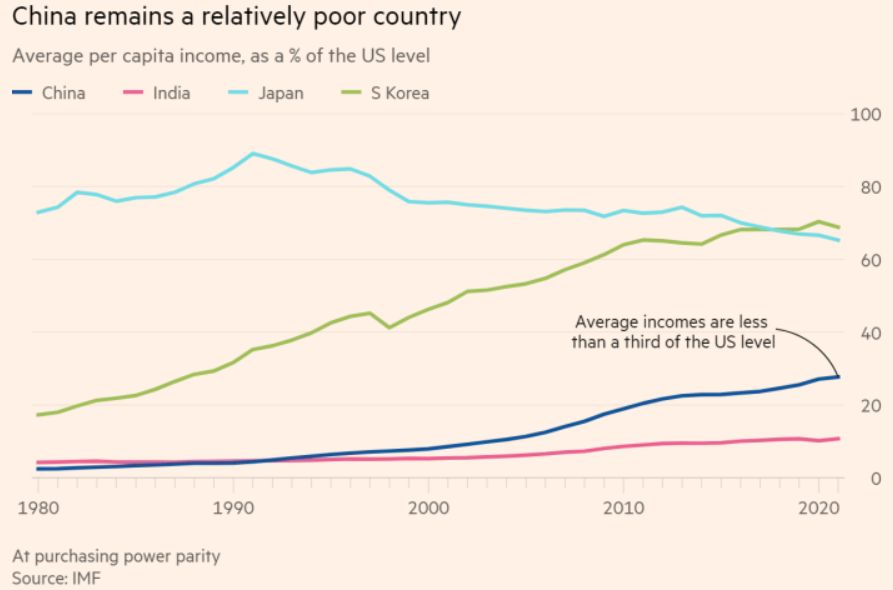
Photographs were
changed to emphasize Mao’s presence or excise purge officials, and history
texts and museums were remodeled to promote the new priorities.
Reformist leader Deng
Xiaoping also tried to reinterpret history, in his case criticizing Mao’s
mistakes in starting the disastrous 1966–76 Cultural Revolution. Deng ushered
China out of the shadow of Mao’s dictatorial regime into an era of collective
leadership, under which party dominance slipped.
Yet the
hubristic rhetoric of the Party about its place in history is
laughable if not for the serious consequences this has for China’s future.
Xi is trying to
change this by updating historical narratives to increase support for the
communist rule, by concentrating power in his own hands and consolidating the
party’s control over society.
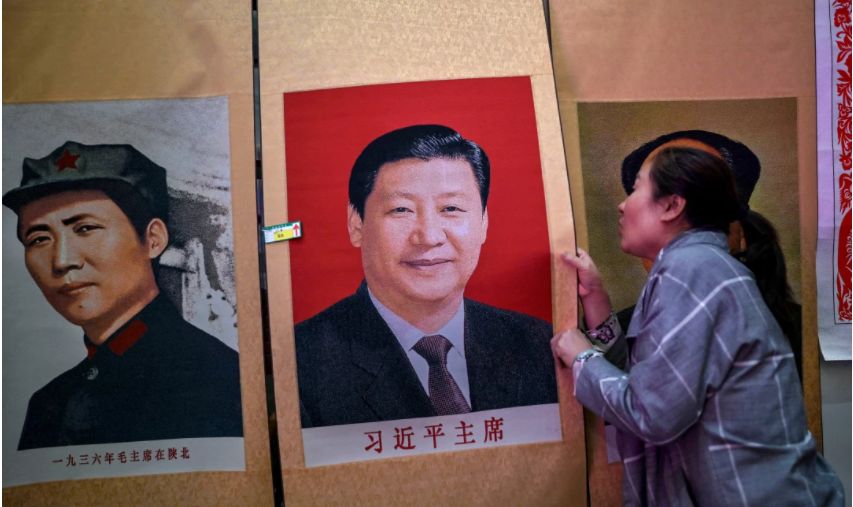
The newest edition of
official party history no longer criticizes Mao Zedong for chaos and killings
in the 1960s and ‘70s, but praises his Cultural Revolution as an
anti-corruption measure and blames the upheavals on “insufficient
implementation of his correct ideology.”
More than a quarter
of the book, which was published in February, is devoted to China’s “new
era” under Xi, in
which the “China dream” of great national rejuvenation is fulfilled. Five pages
describe the COVID-19 outbreak, praising Xi’s leadership of the response as a
demonstration of how the party always puts “the people” first.
Meanwhile, those who
deviate from Beijing’s narrative of harmony and prosperity are punished.
Many were reports by
Chinese journalists who risked their lives covering the early days of the coronavirus outbreak in Wuhan, only to
have their articles censored as Xi pushed for “positive
energy” propaganda focused
on praising heroes, not marking human
suffering.
Cai and Chen were
detained in April 2020 and had been held for more than a year before they went
to trial. Their families were not allowed to see them, hire personal defense
lawyers for them or examine the documents explaining charges against them,
according to Chen’s older brother Chen Kun, who now lives in France.
Chen Kun makes a case
for his brother’s release outside United Nations headquarters in Geneva in
2020:
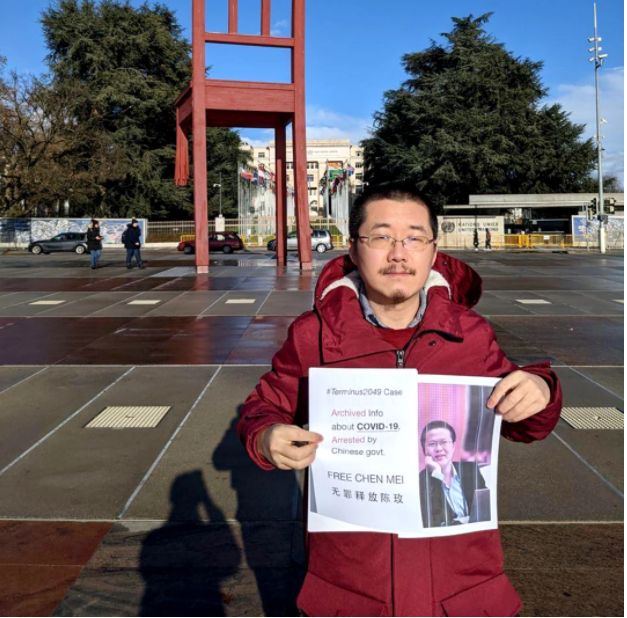
The pressure is not
only coming from officials but also from ordinary people, friends, family,
neighbors, and netizens who are increasingly reporting one
another’s speech,
especially online.
Official statistics
show that mutual tattling has increased. In 2020, China’s Central Cyberspace
Administration handled 163 million reports of improper online speech, an
increase of 17.4% from 2019. The majority came from Chinese social media
platforms including Weibo, Baidu, Alibaba, and Tencent.
In April, China’s
Central Cyberspace Administration issued a new request for reports of “hazardous information involving
historical nihilism.” It offered phone, app and website options for tattling on
anyone caught “twisting” party history, criticizing party leaders, ideology or
policy, “smearing” heroes and martyrs, or speaking negatively of China’s
traditional, revolutionary or modern culture.
Mutual reporting
continued to grow, with nearly 15 million reports that month, an increase of 38.4% from March and a 2.6%
increase from April 2020.
Wall Street
Journal reports on the
proliferation of Communist Party and pro-Xi propaganda that education ministry
is inserting questions on party’s history in college-entrance exams, “to guide
students to inherit red genes,” history classes for employees on the party’s
achievements are being organized by “private businesses, law firms and even a
Shanghai temple dedicated to the Chinese god of wealth… Airlines (are staging)
in-flight singalongs and poetry recitals to teach passengers about the party’s
past.”
Alongside, Xi is
publicly administering loyalty pledges to senior party
leaders while cadres of
the 90 million strong party are simultaneously being put through an ideological
training regimen that includes undertaking tours of ‘red sites’ (party’s most
important historical locations) to foster fidelity.
As Jamestown
Foundation senior fellow and veteran journalist from Hong Kong Willy Wo-Lap
Lam writes, “Xi has redoubled efforts to clamp down on dissent
among intellectuals and even former top cadres while also reining in leading
private entrepreneurs whose wealth and influence may detract from the
all-embracing powers of the party. Finally, Xi, who is also chairman of the
Central Military Commission (CMC) that oversees the People’s Liberation Army,
has masterminded a housecleaning of the nation’s military and police forces.”
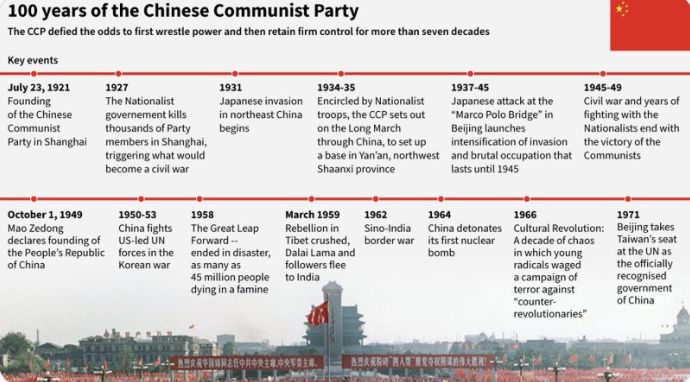
In the run-up to CCP’s
centenary celebrations, Xi’s most urgent project has been engineering history
and whitewashing the crimes of Mao, whose social engineering project Great Leap
Forward in 1957 caused tens of millions of deaths through famine and poverty.
Mao is also responsible for the killing of another two to three million people
through his 10-year purge (from 1966-76) of “counterrevolutionaries”, a pogrom
against imagined political adversaries including elites whom Mao considered to
be a threat to his position.
As Ian Johnson writes
in Chinafile, “Mao was responsible for about 1.5 million deaths
during the Cultural Revolution, another million for the other campaigns, and
between 35 million and 45 million for the Great Leap Famine. Taking a middle
number for the famine, 40 million, that’s about 42.5 million deaths.”
Mao’s atrocities
during his tyrannical rule and the excesses of Cultural Revolution have been
documented in chronicle of party events. Not anymore. In February, Xi issued an updated version of An Abbreviated
History of the Chinese Communist Party (Zhongguo
Gongchangdang jianshi) that
airbrushed all atrocities committed by Mao. He was instead credited for
“setting the foundation of ‘socialism with Chinese characteristics’ and
providing ideological enrichment of the nation with “valuable experience,
theoretical preparation and material foundation” during the 1949-1976 period,”
points out Willy Wo-Lap Lam.
As expected, the new
‘history’, part of a series of books, documents and articles that sanitizes Mao
and glorifies his role, also lionizes Xi and confirms his status as the party’s
“core”. This is essential to address issues of corruption, factionalism and
disloyalty within the party because insubordination against the “core leader”
is to go against the party. This is also a natural progression of Xi’s hyper-centralisation of power which he has done by rendering the
office of prime minister almost powerless.
As Jude Blanchette
and Evan S. Medeiros write in their paper for The Washington Quarterly, former presidents
“Jiang Zemin and Hu Jintao had strong partnerships with their respective
premiers (Zhu Rongji and Wen Jiabao), thus giving the State Council significant
authority over setting economic policy. Xi, on the other hand, has sidelined
premier Li Keqiang and positioned himself at the center of nearly all key
policy discussions. Relatedly, he pushed through one of the biggest political
restructurings in China’s modern history at the 2018 National People’s Congress,
with the CCP subsuming many of the governing and administrative functions that
had previously been the domain of the State Council.”
As mentioned at
the start of this overview Xi has initiated a program with the help of
technology to address “historical nihilism”. If any statements are made or any
posts are put up criticizing Communist Party leaders or their policies,
cyberspace regulators will ensure these are “cleaned”. There is also a hotline
and an online platform “for the public to denounce instances of historical
nihilism,” backed by a 2018 law
protecting the reputations of heroes and martyrs.

Coming to the present time
The core of current era US-China competition since the Cold
War has been over regional and now global order. It focuses on the strategies
that rising powers like China use to displace an established hegemon like the
United States short of war. A hegemon’s position in regional and global order
emerges from three broad “forms of control” that are used to regulate the
behavior of other states: coercive capability (to force compliance), consensual
inducements (to incentivize), and legitimacy (to rightfully command it).
For rising states,
the act of peacefully displacing the hegemon consists of two broad strategies
generally pursued in sequence. The first strategy is to blunt the hegemon’s
exercise of those forms of control, particularly those extended over the rising
state; after all. no rising state can displace the hegemon if it remains at the
hegemon’s mercy. The second is to build forms of control over others; indeed,
no rising state can become a hegemon if it cannot secure the deference of other
states through coercive threats, consensual inducements, or rightful
legitimacy. Unless a rising power has first blunted the hegemon, efforts to
build order are likely to be futile and easily opposed. And until a rising
power has successfully conducted a good degree of blunting and building in its
home region, it remains too vulnerable to the hegemon’s influence to
confidently turn to a third strategy, global expansion, which pursues both
blunting and building at the global level to displace the hegemon from
international leadership. Together, these strategies at the regional and then
global levels provide a rough means of ascent for the Chinese Communist Party’s
nationalist elites, who seek to restore China to its due place and roll back
the historical aberration of the West’s overwhelming global influence.
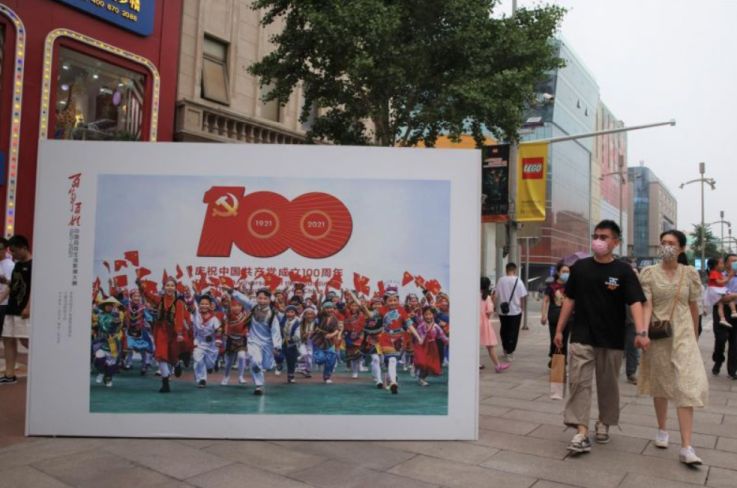
The Global Financial Crises
As a nationalist
institution that emerged from the patriotic ferment of the late Qing period,
the Party now seeks to restore China to its rightful place in the global
hierarchy by 2049.
The Global Financial
Crisis accelerated a shift in Chinese military strategy away from a singular
focus on blunting American power through sea denial to a new focus on building
order through sea control. China now sought the capability to hold distant islands,
safeguard sea lines, intervene in neighboring countries, and provide public
security goods. For these objectives, China needed a different force structure,
one that it had previously postponed for fear that it would be vulnerable to
the United States and unsettle China's neighbors. These were risks a more
confident Beijing was now willing to accept. China promptly stepped up
investments in aircraft carriers, capable surface vessels, amphibious warfare,
marines, and overseas bases.
The Global Financial
Crisis furthermore caused China to depart from blunting strategy focused on
joining and stalling regional organizations to a building strategy that
involved launching its own institutions. China spearheaded the launch of the
Asia Intrastiaicture Investment Bank (AIIB) and the
elevation and institutionalization of the previously obscure Conference on
Interaction and Confidence-Building Measures in Asia (CICA). It then used these
institutions^ with mixed success3 as instruments to shape regional order in the
economic and security domains in directions it preferred.
The Global Financial
Crisis also helped Beijing depart from a defensive blunting strategy that
targeted American economic leverage to an offensive building strategy designed
to build China’s own coercive and consensual economic capacities. At the core
of this effort were China’s Belt and Road Initiative, its robust use of
economic statecraft against its neighbors, and its attempts to gain greater
financial influence.
Beijing used these
blunting and building strategies to constrain US influence within Asia and to
build the foundations for regional hegemony. The relative success of that
strategy was remarkable, but Beijing's ambitions were not limited only to the
Indo-Pacific. When Washington was again seen as stumbling, China's grand
strategy evolved, this time in a more global direction.
Pragmatism,
particularly on economic policy, ushered in a wave of investment that helped
the gross domestic product grow nearly 50 times since Mao’s death in 1976.
China’s economy is now poised to overtake that of the U.S. within the decade, eradicating extreme poverty and creating a new
ultra-rich class: At the end of 2019, China had 5.8 million millionaires and
21,100 residents with wealth above $50 million, more than any country except
the U.S.
During the time
consisting of Brexit, the election of Donald Trump, and the West's poor initial
response to the coronavirus pandemic.
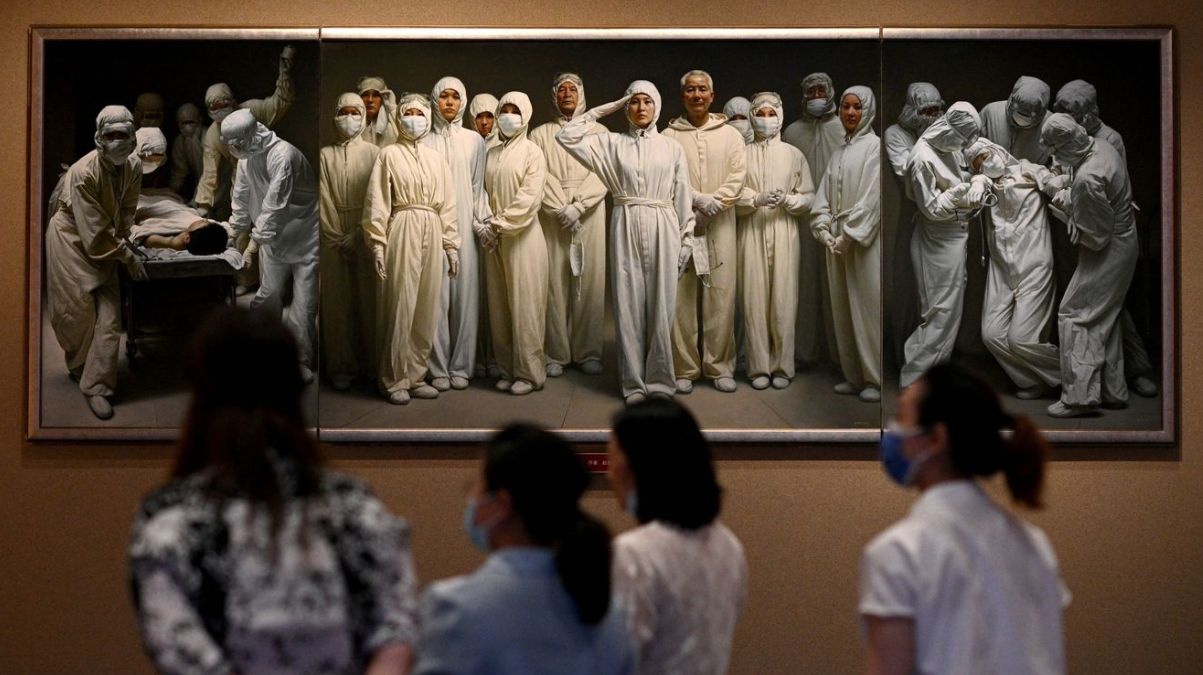
In this period, the
Chinese Communist Party reached a paradoxical consensus: it concluded that the
United States was in retreat globally but at the same time was waking up to the
China challenge bilaterally. In Beijing's mind? great changes unseen in a century”
were underway, and they provided an opportunity to displace the United States
as the leading global state by 2049? with the next decade deemed the most
critical to this objective.
Politically, Beijing
would seek to project leadership over global governance and international
institutions and to advance autocratic norms. Economically, it would weaken the
financial advantages that undeniable US hegemony and seize the commanding heights
of the "fourth industrial revolution." And militarily, the PLA would
field a truly global Chinese military with overseas bases around the world.
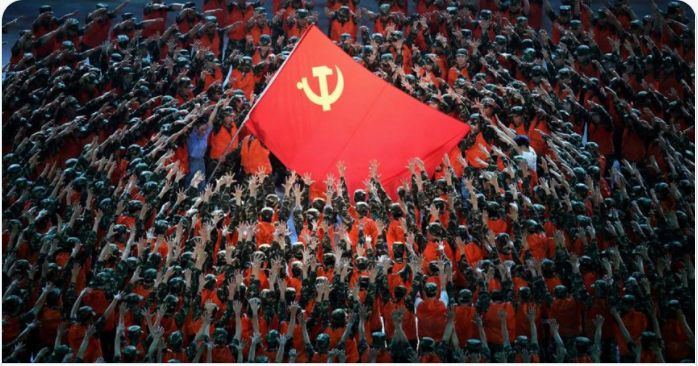
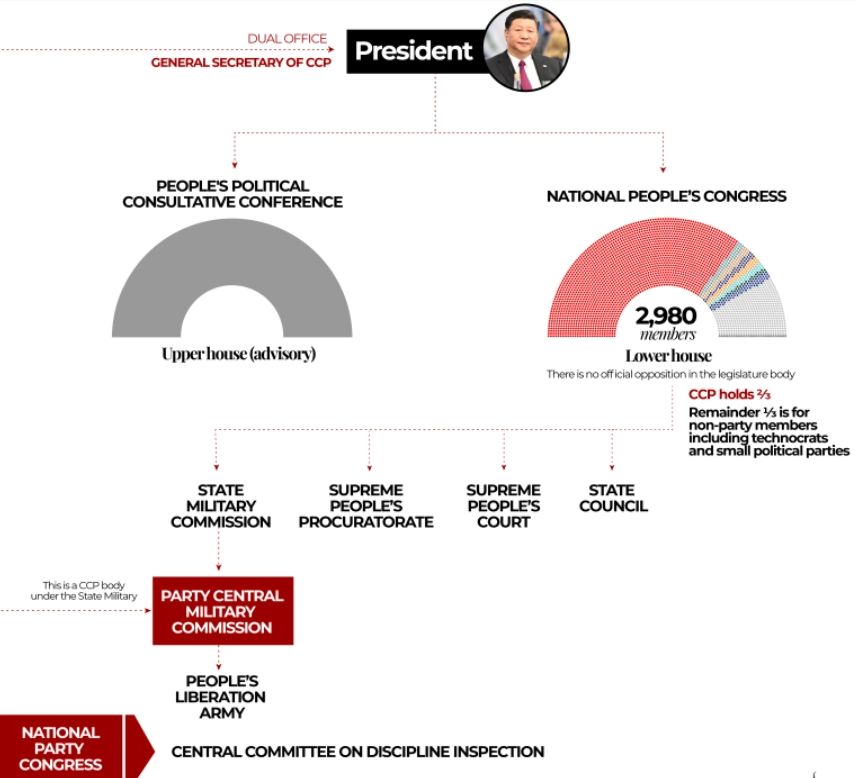
Conclusion
Some of the
strategies to achieve this global order is already discernable in Xi's
speeches. Politically, Beijing would project leadership over global governance
and international institutions, split Western alliances, and advance autocratic
norms at the expense of liberal ones. Economically, it would weaken the
financial advantages that underwrite US hegemony and seize the commanding
heights of the "fourth industrial revolution” from artificial intelligence
to quantum computing, with the United States declining into a
"deindustrialized. English-speaking version of a Latin American republic,
specializing in commodities, real estate, tourism, and perhaps transnational
tax evasion.”8 Militarily, the force with bases around the world could defend
China’s interests in most regions and even in new domains like space, the
poles, and the deep sea. The fact that aspects of this vision are visible in
high-level speeches is strong evidence that China’s ambitions are not limited
to Taiwan or too dominating the Indo-Pacific. The “struggle for mastery,” once
confined to Asia, is now over the global order and its future. If there are two
paths to hegemony, a regional one and a global one, China is now pursuing both.
This is a template China has followed.
With Japan, the U.S.,
and Europe continuing to struggle to pull out of the COVID-19 crisis, China
appears to stand out as the sole winner.
Understood by the
Biden administration, It shows that Beijing would seek to project leadership
over global governance and international institutions and advance autocratic
norms. Economically, it would weaken the financial advantages that underwrite
US hegemony and seize the commanding heights of the 'fourth industrial
revolution. And militarily, the PLA would field a truly global Chinese military
with overseas bases around the world. And so that is what also as we have seen,
the discussion about Taiwan become about.
As for the
so-called Quad, the FT reported that the
Quad is a delusion as the new grouping won’t give the United States any
more leverage over China than it already has.
For a long time,
China was mostly on the defensive instead of taking the offensive on the human
rights issue. Oftentimes, it does not have the upper hand when its opponents
attack because of its weak national strength and large population of poor
people. But today, China has achieved great success in poverty alleviation. Its
economy rebounded quickly after containing the Covid-19 pandemic, and the
people’s morale has been greatly boosted as well. This gives the government the
confidence to fight back against the West.
The country will
surpass the U.S. in terms of nominal GDP in 2028, according to a December
forecast by the Japan Center for Economic Research. Before the pandemic, China
had been expected to become the world's biggest economy in 2036 at the
earliest. The change suggests that ironically, the pandemic, which started in
China, is actually reinforcing the country's strength.

1. C. F. Yong and R.
B. McKenna, Kuomintang Movement in British Malaya, 1912–1949, Singapore,
National University of Singapore Press, 1990.
2. Xinhua, ‘Over 500
Confucius Institutes Founded in 142 Countries, Regions’, China Daily, 7 October
2017, http://www.chinadaily.com.cn/china/2017-10/07/content_32950016.htm
For updates click homepage here